I love to walk and explore my surroundings wherever I am. Green park spaces and large Southern live oaks provided shade from the cloudless skies where the sun was rising for a blazing hot day on the streets of Savannah on Cinco de Mayo. The temperature reached 93 on May 5 and was only one degree off the all-time record heat for the date. I sought shade all day on a day spent mostly outside.
22 Savannah Squares
The city of Savannah was laid out in 1733 with four city squares and housing surrounding these squares. This was the Oglethorpe Plan, named for James Oglethorpe, founder of the Georgia Colony as a social experiment to reduce England’s debtors’ prison population through establishing small family-run farms in America.
As the city grew over the next century, by 1851 there were 24 city squares in Savannah. Three of the squares were demolished in the 20th century and Ellis Square was reclaimed in 2010. That explains why Ellis Square does not have the old trees present in the other 21 squares. Andaz Savannah, a Hyatt hotel is across the street from Ellis Square and the place I was staying on the day I decided to visit 22 squares in Savannah.
Aerial view of Savannah with Forsyth Park and 22 Savannah Squares between the park and the Savannah River.
I am a lover of urban parks and green space. Savannah’s 22 squares and Forsyth Park are one of the main reasons I fell in love with this city during my brief two-night stay. The fact that you can walk around with an open container of alcohol in plastic cups is another feature of Savannah that would have been appealing to me if it had not been searing heat outside in early May.
After a hearty breakfast at 22 SQ Andaz Savannah, I drank three beers that had chilled overnight in my Andaz suite mini-frig, while writing my blog post for the day and then headed out to explore the 22 squares of Savannah (carrying half-gallon of sports drink to stay hydrated). Now you know why the restaurant is called 22 SQ.
During my walking tour of Savannah, I felt more grounded in the Savannah experience in some ways than many other tourists riding on the Historic Tour busses traversing the city. I didn’t get much of the historic information at the time, but with a couple hundred photos and Wikipedia, I’ve learned a great deal writing this piece about where I was in Savannah.
Savannah Squares, lobby art in Andaz Savannah
Ellis Square (2010, original square 1733)
Ellis Square is one of the original four squares of Savannah in the 1733 plan and served as the historic market square for more than two centuries. This market square was also where slaves were sold during the period when slavery was permitted.
In 1954, the city signed a 50-year parking garage lease and the historic structures were demolished. A plan to restore Ellis Square was approved by the city to provide public space and the parking garage was moved underground.
The former parking garage explains to me why Ellis Square is the one square in Savannah without old shade trees. The fountain is a desirable feature.
Ellis Square, Savannah
Telfair Square (1733)
Originally called St. James Square when established as another one of the four original squares of Savannah, the name changed in 1883 to Telfair Square to honor one of Georgia’s prominent families. This square was an early fashionable residential area of Savannah.
Telfair Square, Savannah
Savannah’s Southern Live Oaks (Quercus virginiana)
Savannah’s trees are one aspect of the city I adore. About 2/3rds of the city’s numerous public trees are Southern live oaks, many draped in Spanish moss. The Southern live oak is Georgia’s state tree. The size of many of the trees in Savannah was impressive to me. Big trees have witnessed quite a bit of history. History we can only imagine.
The Southern live oak is native to the coastal area of the Atlantic from Virginia to Florida. The trees spread wide in a canopy and may live for 300 years. Their large branches provide shade and their powerful anchor to the earth makes them sturdy trees withstanding hurricanes.
Big trees are something in my life that I have come to appreciate greatly. California has the tallest, voluminous and oldest trees on earth in the coast redwoods (Sequoia sempervirens), Giant Sequoia (Sequoiadendron giganteum) and Great Basin bristlecone pine (Pinus longaeva). Central coast California has some of the largest specimens of coast live oak (Quercus agrifolia) remaining in California. I feel a buzz walking around the giants.
Savannah had its share of giant trees in the city squares and neighborhoods.
Large tree in Telfair Square
Orleans Square (1815)
Orleans Square was laid out in 1815 in celebration of Andrew Jackson’s victory in the Battle of New Orleans.
Spanish moss draped live oak limbs in Orleans Square.
German Memorial Fountain is a recent addition from 1989 to commemorate contributions by early German immigrants to the establishment of Georgia.
Walking the residential neighborhoods between the city squares gives the viewer a walk through architectural history. There are some grand houses and historic buildings to visit along the way.
Many of these homes in historic Savannah were built from the 1790s to 1860s.
The reason I was walking through architectural time is my path from square to square was taking me away from the Savannah River to Forsyth Park and then I planned to walk back to the river visiting another set of city squares. The city grew outward from the river and walking east to west and back would be more of a chronological order to walking the 22 squares of Savannah. My path was taking me through two centuries of Savannah development every 30 minutes.
Pulaski Square (1837)
The greenness of Pulaski Square and pathways under a canopy of oak limbs made this one of my favorite of the 22 squares in Savannah.
Pulaski Square is named for General Casimir Pulaski, a Polish-born Revolutionary War hero who died of wounds received in the Siege of Savannah (1779). There are no monuments in this square with the monument to General Pulaski located in Monterey Square.
Pulaski Square live oak canopy.
There were dozens of other camera-wielding photographers on the streets of Savannah. Add on all the tourists on the packed open-air tour trolleys and there were hundreds of tourists snapping photos of houses, museums, churches, trees and parks every second on this day in the square mile of downtown historic Savannah. Savannah is a beautiful city for photography.
Street canopy from live oaks reveals how these trees spread their limbs far from the tree trunk and provide abundant shade without blocking out the sun.
Chatham Square (1847)
Named for William Pitt, 1st Earl of Chatham. William Pitt never visited Savannah. His leadership in England helped establish and support the colony of Georgia. Savannah is located in Chatham County, Georgia.
Chatham Square is located on the outer line of Savannah squares. As Savannah expanded further to the south, the grid of city squares was abandoned in favor of a large park – Forsyth Park.
Forsyth Park is a 30-acre park in the southern portion of historic Savannah.
John Forsyth, Sr. was governor of Georgia 1827-29 and U.S. Secretary of State 1834-41 under the 7th and 8th Presidents Andrew Jackson and Martin Van Buren. Forsyth was the lead politician during the La Amistad slave ship case that was appealed by the United States government of President Martin Van Buren to the U.S. Supreme Court. The lower courts had ruled the Africans should be free men and the U.S. should assist getting them back to Africa. Forsyth as Secretary of State supported the case against abolitionists that the Africans of La Amistad should be returned to Cuba and the Spanish.
Forsyth Park has large open spaces on the southern end of the park. There is a paved path with a beautiful canopy of oaks leading to the Confederate Memorial in the park center.
Oak lined path in south end of Forsyth Park leading to Confederate Memorial.
Confederate Monument, Forsyth Park, Savannah, Georgia (1874-75)
Robert Reid, Scotland-born Canadian sculptor designed the Confederate Memorial unveiled May 24, 1875. The original design featured two statues representing Judgement and Silence on top. That design was met disapprovingly by the residents of Savannah. The original statues were replaced in 1878 are now located in Laurel Hill and Laurel Grove cemeteries. ‘Silence’ marks the graves of Savannah soldiers killed at battle of Gettysburg. The Savannah Confederate Monument is topped “with a bronze statue of a Confederate soldier, paid for by George Wymberley Jones De Renne.” HistoricSavannahParks.com.
The Green Side of Historic Savannah
This was a mile long walk through historic Savannah. The beautiful red-brick Mansion on Forsyth Park is a Marriott Autograph Collection hotel located in the green residential area of Savannah’s Forsyth Park.
This post only covered five of the 22 squares to share some of the city’s green spaces that I enjoyed while visiting Savannah.
There are another 17 small, green squares in historic Savannah filled with trees, monuments and history.
*****
Ric Garrido of Monterey, California is writer and owner of Loyalty Traveler.
Loyalty Traveler shares news and views on hotels, hotel loyalty programs and vacation destinations for frequent guests.
Follow Loyalty Traveler on Twitter and Facebook and RSS feed.



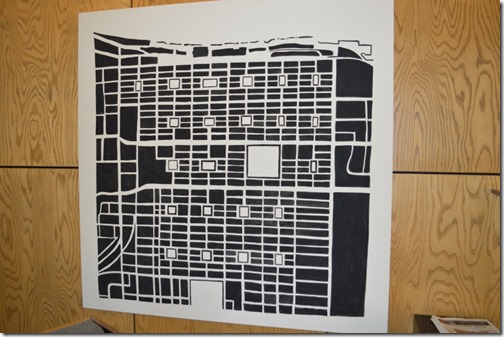
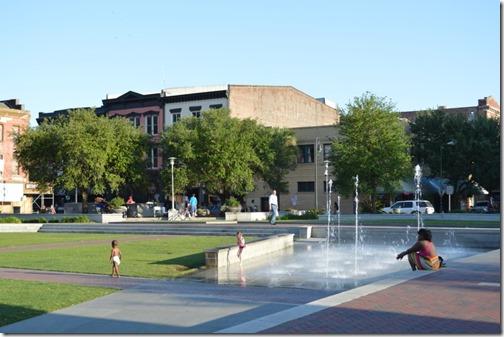
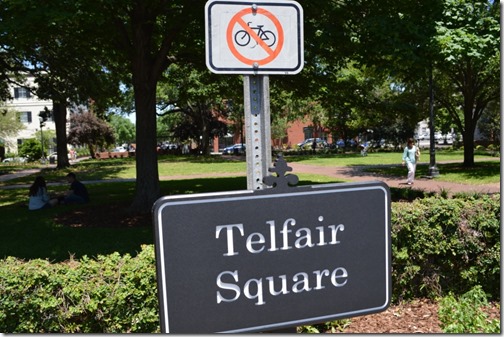

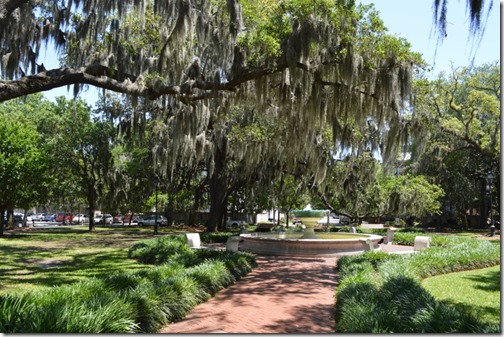
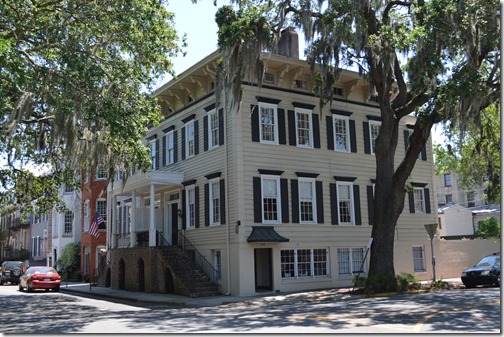
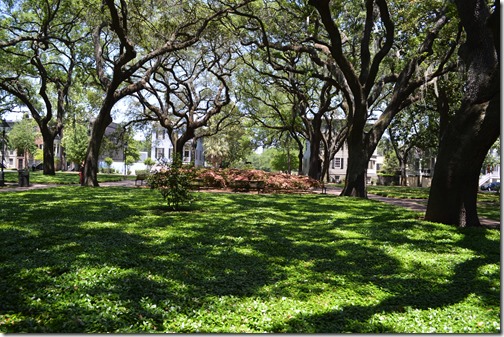
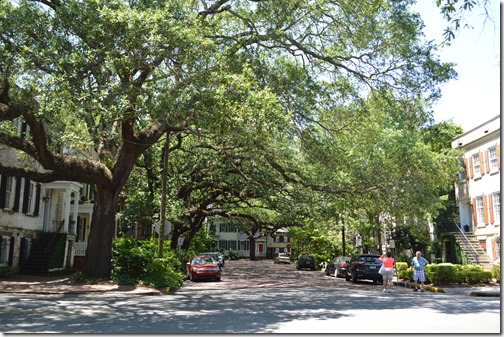
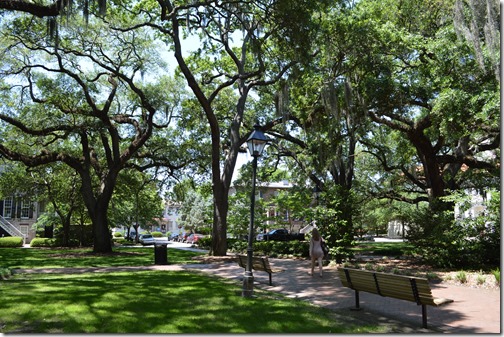
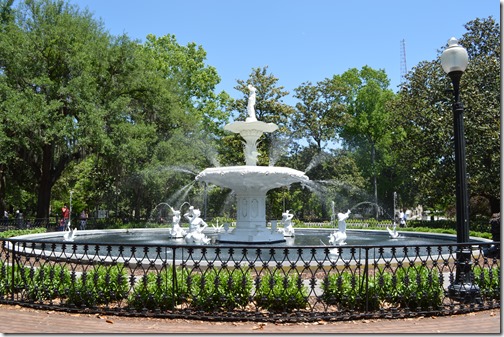
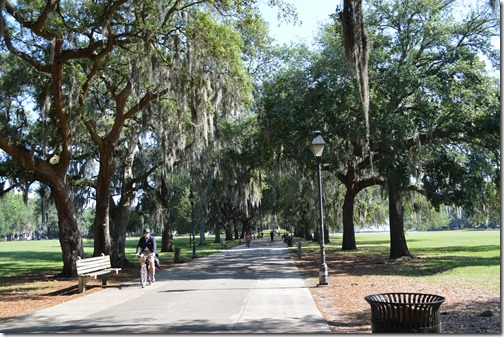
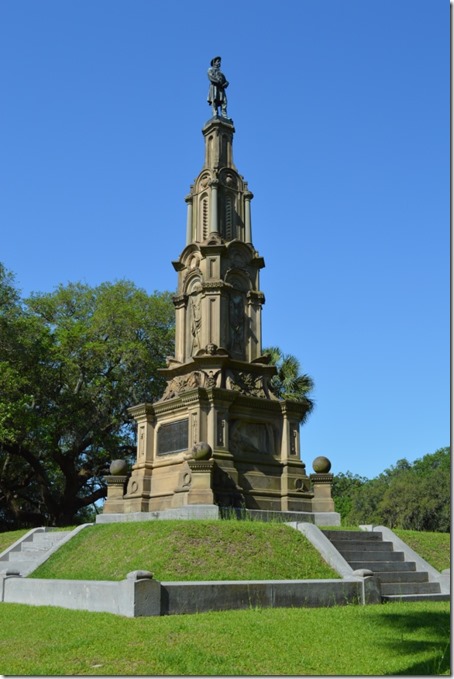

1 Comment
Comments are closed.